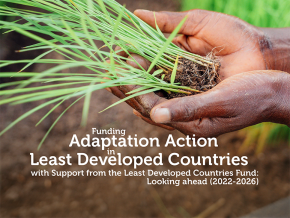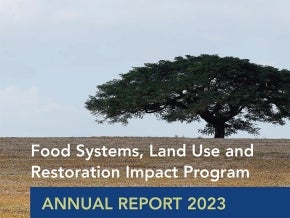
Even as Asia continues to be the region with the world’s fastest economic growth, climate change means it is also the world’s most disaster-prone, with its five Least Developed Countries bearing the brunt.
Recognizing their plight, the Global Environment Facility brought together representatives from Bangladesh, Bhutan, Cambodia, Nepal, and Lao PDR to explore ways of bolstering national climate resilience during a four-day workshop in September.
The workshop was held in the Cambodian city of Siem Reap only weeks after heavy rains and high water levels on the Mekong River brought misery to more than 20,000 households and damaged tens of thousands of hectares of agricultural land and infrastructure across 19 of Cambodia’s 25 provinces – prompting government calls for enhanced adaptation planning.
Cambodian Environment Minister Eang Sophalleth opened the workshop by highlighting how his country is combatting climate change through a national “clean, green, and sustainable” approach. This includes a commitment to plant 1 million trees annually to boost reforestation, as well as supporting farmers with the planting of bamboo as a way to sequester carbon and boost livelihoods.
The workshop provided a venue for government climate change adaptation experts from the five participating counties, as well as representatives from environmental and civil society organizations, to share knowledge about different climate adaptation approaches.
Another key workshop goal was to help participating Least Developed Countries enhance their access to finances from the GEF’s Least Developed Countries Fund (LDCF). This fund, along with its sister GEF adaptation fund the Special Climate Change Fund (SCCF), is specifically designed to address a global shortfall in adaptation financing by directing new finance flows to help bolster the resilience of countries most exposed to the climate crisis.
Somaly Cham, Undersecretary of State for the Cambodian Ministry of Environment and Alternate GEF Council Member, said during the workshop: “The LDCF is very important for Cambodia, as well as for the Asian countries, because it will help our country to access funding to deal with the climate change issue, and also to develop our country with a green economy.”

The LDCF grant amount each Least Developed Country can receive during the GEF’s current funding period running to 2026 is $20 million, double the allocation during the previous funding cycle leading up to 2022.
In addition to increased funding, the GEF has been employing a new strategic approach focusing on enhanced outreach by travelling to the regions of the most vulnerable countries to gain a firsthand understanding of their adaptation needs. Least Developed Countries are particularly vulnerable to climate change as they are least able to recover from climate stresses, and their economic growth is highly dependent on climate-sensitive sectors. At the same time, climate change threatens to undo decades of progress towards reducing poverty.
Daniele Violetti, Senior Director, Programs Coordination, at the United Nations Framework Convention on Climate Change, told the workshop that “Least Developed Countries in Asia are on the frontline of grappling with development challenges that have been exacerbated by climate change.”
Violetti highlighted a recent World Meteorological Organization report identifying Asia as the most disaster-prone region. In 2022, there were more than 80 disasters across Asia, mainly floods and storms, which killed more than 5,000 people and affected 50 million more. Overall economic damage exceeded $36 billion.
To gain insight into practical measures on the ground, workshop participants visited a GEF-funded LDCF adaptation project implemented by the Food and Agricultural Organization of the UN in Varin district, north of Siem Reap. They spoke to members of a women-led group which is pooling local people’s finances together to bolster livelihoods, and thereby avoid destructive cultivation practices, as part of a broader plan to improve watershed management.
Workshop participants also joined in an interactive learning session which shared experiences from an adaptation project in Lao PDR, using monitoring and information systems to improve food security, and a project in Bhutan to reduce the devastation of glacial lake outbursts. These outbursts occur when melting glaciers create severe damage downstream by overfilling upstream lakes.
Tshering Choden, with Bhutan’s Ministry of Finance, said her country’s ability to access funds from the LDCF has been “very useful” in strengthening its efforts to bolster climate resilience, which includes a constitutional commitment to keep at least 60 percent of the carbon negative country forested.
Summing up the workshop, GEF Lead Environmental Specialist Chizuru Aoki said each of the participating Asian Least Developed Countries brought their own set of climate adaptation priorities.
“This has provided a great opportunity to really understand their adaptation challenges - as well as ways of building the climate resilience of their countries, their ecosystems, their economies, and their people,” she added.


